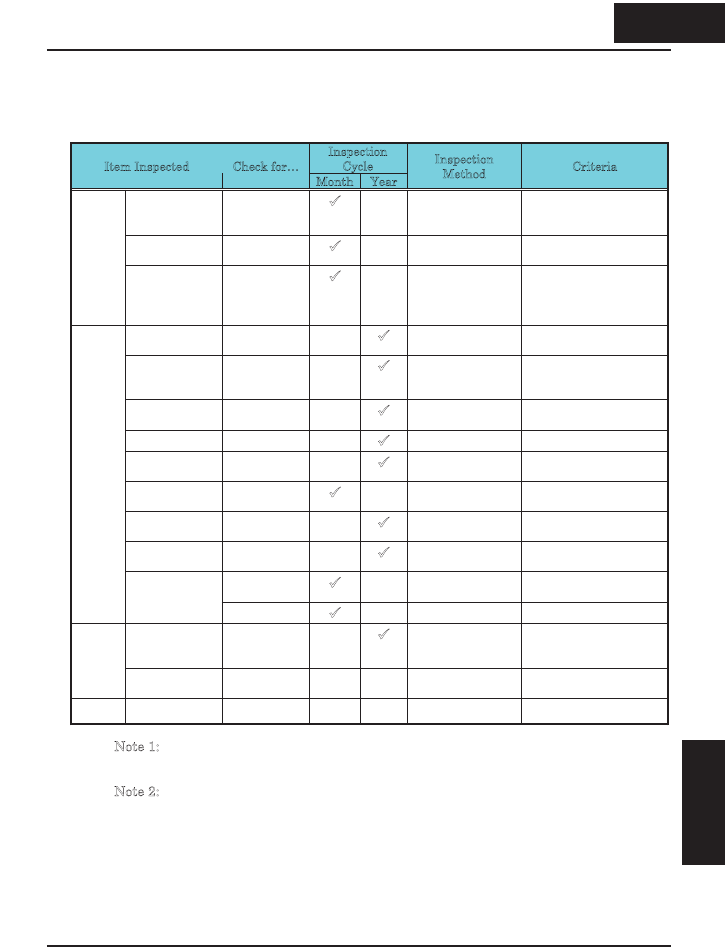
Maintenance and Inspection
Monthly and Yearly Inspection Chart
Inspection
Cycle
Item Inspected Check for…
Month Year
Inspection
Method
Criteria
Ambient
environment
Extreme
temperatures
& humidity
9
Thermometer,
hygrometer
Ambient temperature
between – 10 to 40qC,
non-condensing
Major devices Abnormal
noise & vib.
9
Visual and aural Stable environment for
electronic controls
Overall
Power supply
voltage
Voltage
tolerance
9
Digital volt meter,
measure between
inverter terminals
[L1], [L2], [L3]
200V class:
200 to 240V 50/60 Hz
400V class:
380 to 460V 50/60 Hz
Ground
Insulation
Adequate
resistance
9
Digital volt meter,
GND to terminals
5 M: or greater
Mounting No loose
screws
9
Torque wrench M3: 0.5 – 0.6 Nm
M4: 0.98 – 1.3 Nm
M5: 1.5 – 2.0 Nm
Components Overheating
9
Thermal trip
events
No trip events
Housing Dirt, dust
9
Visual No abnormalities
Terminal block Secure
connections
9
Visual No abnormalities
Smoothing
capacitors
Leaking,
swelling
9
Visual No abnormalities
Relay(s) Chattering
9
Aural Single click when
switching ON or OFF
Resistors Cracks or
discoloring
9
Visual Check Ohms of optional
braking res.
Noise
9
Power down,
manually rotate
Rotation must be
smooth
Main
circuit
Cooling fan
Dust
9
Visual Vacuum to clean
Overall No odor,
discoloring,
corrosion
9
Visual No abnormalities
Control
circuit
Capacitor No leaks or
deformation
Visual Undistorted appearance
Display
LEDs Legibility Visual All LED segments work
Note 1: The life of a capacitor is affected by the ambient temperature. See “Capacitor
Life Curve” on page 6–11.
N
ote 2: The inverter must be cleaned periodically. If dust accumulates on the fan and
heat sink, it can cause overheating of the inverter.
69
Troubleshooting and
Maintenance
6 9
Troubleshooting and
Maintenance


















